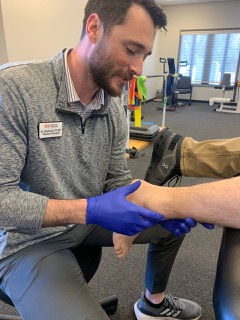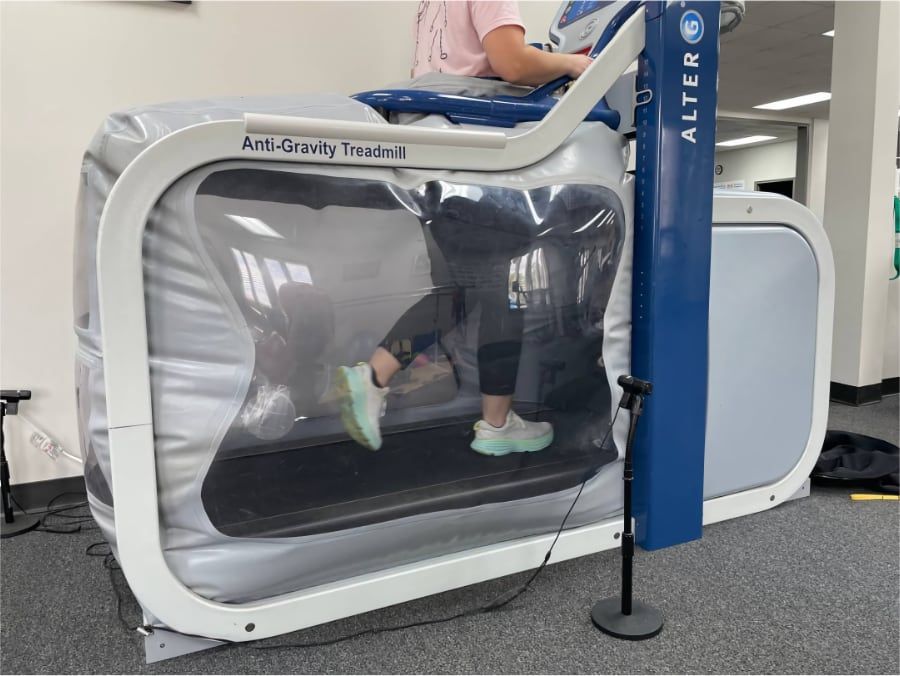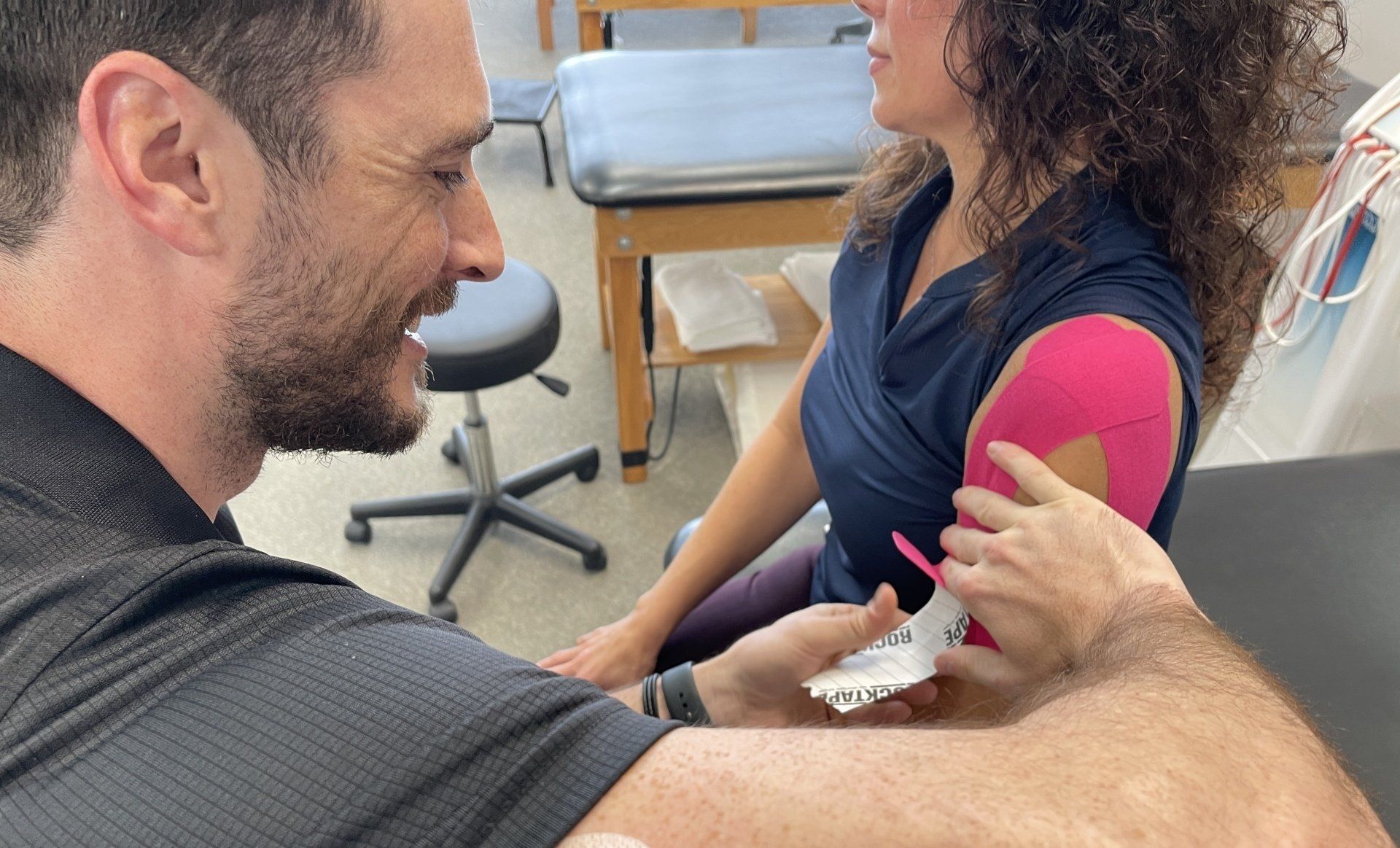Sprain vs Tear: Identifying the Difference
Written By: Chad Cole
When you're trying to figure out whether you've got a tear vs sprain, it can be difficult to tell the difference between these types of injuries. They have several similarities, but there are a few key differences between these two types of injuries that make them distinct. Both cases will include
swelling, pain, and inflammation, which is part of the body's way of healing and protecting itself. In either case, you may require the
care of a physical therapist to completely recover from the injury. Here's an in-depth look at the differences between tear vs sprain to help you understand and identify the differences between these two types of soft-tissue injury.

What is a Sprain?
A sprain is an overstretching or tear in the ligament, and it can fall when falling or twisting, or when you have an impact on that part of the body that places the joint into an unnatural position. Sprains only impact the ligament, which is why they're limited to joints, where the ligaments stabilize the joint and muscles that move it. A mild sprain stretches the ligament, while a moderate sprain will partially tear the ligament or detach the ligament from the bone, and a severe sprain will completely tear the ligament or detach it from the bone, but the tissue will typically heal without surgical intervention. The severity will also impact the recovery time, from a few days for a mild sprain to a couple of months for a severe sprain.
Symptoms of a Sprain
Sprains have distinctive symptoms that include:
- Limited range of motion or pain when trying to exceed that range
- Hearing or feeling a popping sensation in the joint at the time of injury
- Localized swelling, bruising, pain, and/or inflammation
What is a Tear?
Though tears can also take place in ligaments, making them very similar to sprains, they can also appear in tendons and muscle tissue further away from the joint. They occur using the same types of motions as a sprain, including impacts, twisting, and falling motions, but are typically a more concerning injury. That's because of the healing times of these types of injuries, taking a few weeks for mild tears to several months for moderate to severe tears, with some requiring surgical intervention to return full functionality to the tissue, such as an ACL repair. Tears will often require physical therapy for full recovery due to the severity of the injury and the requirement for careful motion to prevent reinjuring the tissue.
Symptoms of a Tear
Tears also have several distinctive symptoms, including:
- Inability to bear weight on the impacted area
- Visual deformity of the area impacted
- Immobility or excessive looseness of the area
- Sudden and severe pain, swelling, and bruising
- A popping sound or sensation at the time of injury
These are very similar to those of sprains, except the first three symptoms: loss of weight-bearing capability, deformity, and excessive looseness of the region that is injured.
How to Prevent a Sprain or Tear
To prevent sprains or tears that are common to many types of athletic and physical activities, there are several approaches you can take to reduce the likelihood of injury. These include:
- Warm up your muscles by taking a quick walk or similar aerobic activities to get blood moving to your muscles and prepare them for stretching.
- Stretch muscles you expect to use in the activity, including calves, quads, hamstrings, shoulders, arms, back, neck, and activity-specific muscles.
- Wear high-quality athletic shoes designed for your activity. These shoes will provide proper traction and support during the activity to help prevent injuries.
- Use high-quality equipment that will help absorb the shock of the activity, such as pickball paddles, gloves, and similar equipment designed to protect yourself.
- Follow a healthy, well-rounded diet when you're inactive, to ensure your body has the right nutrients to perform well and support its tissues.
- Exercise several times a week, including stretching and strength-bearing exercises, so your body can support its tissues during activity.
- Drink plenty of water to stay hydrated, as this helps your tissues heal after major, minor, or light training tears and injuries. Follow any doctor's instructions.
How Can You Treat Your Injury at Home
To help treat your injury at home before seeing your doctor, the pneumonic PEACE can help you remember what to use for initial treatment:
- Protect the injury by limiting movement for one to three days, depending on the severity and when your doctor can see you. Move slightly to prevent adhesions.
- Elevate the injury above heart level so that the excess fluid from swelling can drain more easily, reducing inflammation. Ice may be used for short periods under 15 minutes.
- Avoid non-steroidal anti-inflammatory medications (NSAIDs) like aspirin, ibuprofen, and naproxen to speed healing. Acetaminophen is okay for pain.
- Compression bandages or tape can help reduce initial swelling and encourage fluid to leave the area with cell death products, speeding healing.
- Educate yourself on your options for recovery, including light exercise, taping, and similar strategies that may be incorporated into physical therapy.
Later on in your recovery, you'll receive specific instructions from a physical therapist on what you should do to improve your overall recovery time when you're at home between sessions. This may include light exercise, limited loadbearing activities, use of a TENS unit, acupuncture or acupressure, massage therapy, kinetic taping, NSAIDs, Epsom salt soaks to reduce swelling, and similar healing modalities. Be sure to follow your physical therapist's instructions exactly, as overdoing your work at home can lead to a setback in your injury and increase, rather than decrease, your recovery time.
When to See a Physical Therapist
When you've suffered a moderate or severe injury, it's important to see a physical therapist as soon as possible so that your injury can be properly treated. The experienced professionals at Back in the Game are ready to help your recovery - contact us today!
About the Author
Chad Cole
PT, DPT
Specialties: Knee Injuries and post-surgical conditions
Certifications: Dry Needling and Spinal Manipulation
Location(s): Flowery Branch, GA
Contact
Request an appointment





